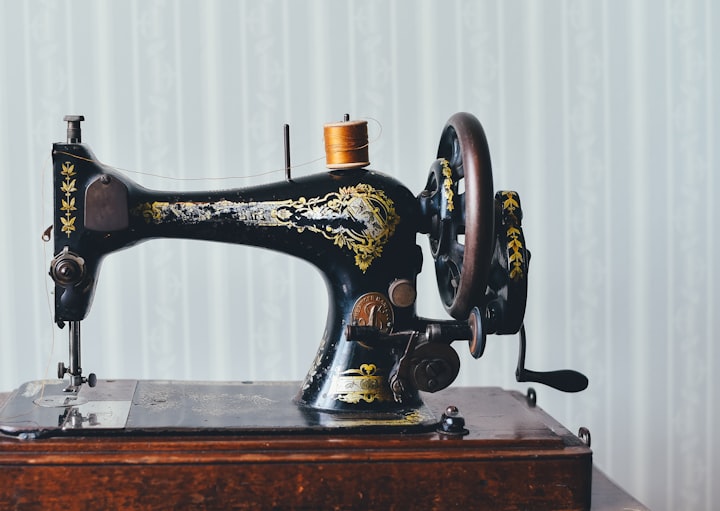The Inventor of Cotton Candy was a Dentist
The world is filled with creatives that aim to create the next big invention. I love it when the history of an invention has an ironic history; and nothing is more ironic than a dentist inventing cotton candy!

Dental health is a vital part of our daily routine. Of course, certain foods can harm our teeth, so they should be eaten in moderation. These foods are typically packed with sugar and acids, so even orange can be harmful despite being seen as a healthy option. However, certain foods are well-known unhealthy for your teeth, candy floss being a prime candidate. It comes as a surprise that the inventor of candy floss was not a sugar typhoon but the very person that will tell you to stay away from sugar. Here's the story of William Morrison, the dentist that helped to invent cotton candy.
What is Candy Floss

Cotton candy is a spun sugar delicacy that mimics cotton. It's also known as fairy floss or candy floss. Small amounts of flavouring or food colouring are generally present. The candy is manufactured by spinning sugar centrifugally through minute holes after it has been heated and liquefied, causing the sugar to rapidly cool and re-solidify into tiny strands. It's usually offered in a plastic bag or on a stick or paper cone at various fairs and events. It is the perfect treat to have fun.
The Maker

Dentist William Morrison and confectioner John C. Wharton devised machine-spun cotton candy in 1897, and it was first offered to a broad public as "Fairy Floss" during the 1904 World's Fair when it sold 68,655 boxes for $25, which is equivalent to $7.2 in 2020. Albert D. Robinson of Lynn, Massachusetts, filed a patent application for an Electric Candy-Spinning Machine on September 6, 1905. The invention was for a system that combined an electronic starter with a motor-driven rotational bowl to keep the temperature stable. He sold the rights to the New York-based General Electric Company in May 1907. However, his fundamental Cotton Candy machine patent is still in use today.
To make things even better, a comparable cotton candy machine was invented in 1921 by Joseph Lascaux, a dentist from New Orleans, Louisiana. The delicious treat was renamed "cotton candy" in the Lascaux patent, and the name "fairy floss" was dropped, though it is still used in Australia. Then, in the 1970s, an automatic cotton candy machine was developed that manufactured and packed the product. In the 1970s and afterwards, this made it easier to create and sell at carnivals, fairs, and retail stores.
How is Cotton Candy Produced?

A spinning head encircles a small "sugar reserve" bowl into which a charge of granulated, coloured sugar, or separate sugar and food colouring is placed. Heaters at the lip of the head melt the sugar, which is then pushed out by centrifugal force through microscopic holes. Coloured sugar is milled with melting characteristics and a crystal size optimised for the head and heated holes. In contrast, granulated sugar used in baking contains fine crystals that spin out unmelted, and rock sugar crystals are too large to contact the heater, slowing cotton candy production properly.
The molten sugar condenses in the air and collects in a larger bowl that encircles the spinning head. After allowing the cotton-like product to accumulate on the inside walls of the larger bowl for a length of time, machine operators twirl a stick or cone around the rim of the catching bowl, gathering the sugar strands into parts that are served on a stick or cone, or in plastic bags. The operator refills the sugar reserve bowl with more feedstock as it depletes. Because the substance is humidity sensitive, the process can be unpleasant and sticky in hot summer climates. We've all had a bad experience with cotton candy sticking to our fingers or breaking apart in warm or wet environments. Nature is literally taking candy from us.
The next time you think of how something came to be what it is, never exclude the obvious. Who knows what other inventions have ironic inventors behind them? One thing is for sure if we happen to pass any others, we are sure to let you know.
Thank you for taking the time to read our blog! If you enjoyed the content or learnt something along the way, please consider leaving a '<3' below! We would appreciate it if you could leave a small tip to support us in our mission to provide free, weekly infotainment for you to enjoy!
If you wish to begin your Vocal journey, join the Vocal+ programme to get more for your work! Earn more per view, withdraw your profits quicker, and gain access to Vocal+ Challenges with prizes to be won every week!
Use the link below and begin your Blogging career today!
https://vocal.media/vocal-plus?via=dawid
You're the reason we can continue doing what we love and making all of this possible. We are forever grateful for your support!
About the Creator
People! Just say Something!
Quirky Writing created by Artistic Creativity and the power of AI with the goal of learning something new every day!
Facebook: https://www.facebook.com/PeopleJSS
Twitter: https://twitter.com/PeopleJSS






Comments
There are no comments for this story
Be the first to respond and start the conversation.